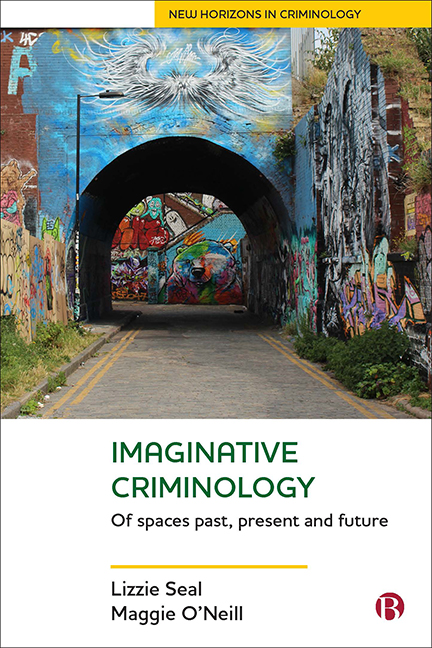Book contents
- Frontmatter
- Contents
- List of figures and tables
- Preface
- 1 Imaginative Criminologies of Space: the Spaces of Imaginative Criminology
- 2 Historical Spaces of Confinement 1: Homes for Indigenous Children in Australia
- 3 Historical Spaces of Confinement 2: Magdalene Laundries
- 4 Creative Writing and the Imagined Spaces of Imprisonment
- 5 Border Spaces and Places: the Age of the Camps
- 6 Imagining Spaces of Violence and Transgression in Vancouver and Northern Ireland
- 7 Imagining Dystopian Futures in Young Adult Fiction
- 8 Conclusion
- References
- Index
2 - Historical Spaces of Confinement 1: Homes for Indigenous Children in Australia
Published online by Cambridge University Press: 30 April 2022
- Frontmatter
- Contents
- List of figures and tables
- Preface
- 1 Imaginative Criminologies of Space: the Spaces of Imaginative Criminology
- 2 Historical Spaces of Confinement 1: Homes for Indigenous Children in Australia
- 3 Historical Spaces of Confinement 2: Magdalene Laundries
- 4 Creative Writing and the Imagined Spaces of Imprisonment
- 5 Border Spaces and Places: the Age of the Camps
- 6 Imagining Spaces of Violence and Transgression in Vancouver and Northern Ireland
- 7 Imagining Dystopian Futures in Young Adult Fiction
- 8 Conclusion
- References
- Index
Summary
Cultural criminologists have interrogated the representation of prisons in the popular imagination but other spaces of confinement have received far less criminological attention (see Rafter, 2006; Brown, 2009). Brown (2009: 5) contends that representations of prison operate as a cultural resource for people to make sense of punishment and provide ‘frameworks for ordinary citizens to step into or out of selfconscious modes of awareness as moral spectators and deliberative citizens’. This approach can be applied to representations of other spaces of confinement, which were not prisons but were a ‘barrier to social intercourse with the outside and to departure’ (Goffman, [1961] 2007: 4). This is the first of two chapters that focus on imagining space in institutions that were based on confinement and control, but were not penal: homes for Indigenous children in Australia and Magdalene laundries in Ireland. Different types of representation of historical confinement highlight the significance of memory and cultural memory and enable making sense of and thinking through these institutions.
In focusing on how spaces of confinement are imagined, we employ Goffman's ([1961] 2007) work on total institutions. As Scott (2010) argues, the spatial organisation of confining institutions was crucial to their regimes. They physically confined inmates and limited their access to resources. Along with prisons, Goffman ([1961] 2007) identified hospitals, army barracks and boarding schools as examples of total institutions. They all segregated disorderly groups from mainstream society and sought to reform and improve them. This attention to measures for dealing with the disorderly is highly relevant to our focus on transgression and the social control of those perceived to disturb order. Goffman's exploration of inmates’ small successes within the total institution, which allowed them to retain a sense of independence, and their ways of ‘making do’ anticipated later work on the micropolitics of resistance (Scott, 2010). Although criticised for neglecting issues of power, Scott (2011) contends that Goffman's focus on coercion, dominance and hierarchy in total institutions, which are ‘forcing houses for changing persons’ (Goffman, [1961] 2007: 22), demonstrates that the negotiation of power is central to the concept.
Another reason for employing the concept of the total institution is that it has resonated beyond academic social science, meaning that it has helped to shape some cultural representations and cultural memory of confinement.
- Type
- Chapter
- Information
- Imaginative CriminologyOf Spaces Past, Present and Future, pp. 21 - 36Publisher: Bristol University PressPrint publication year: 2019

